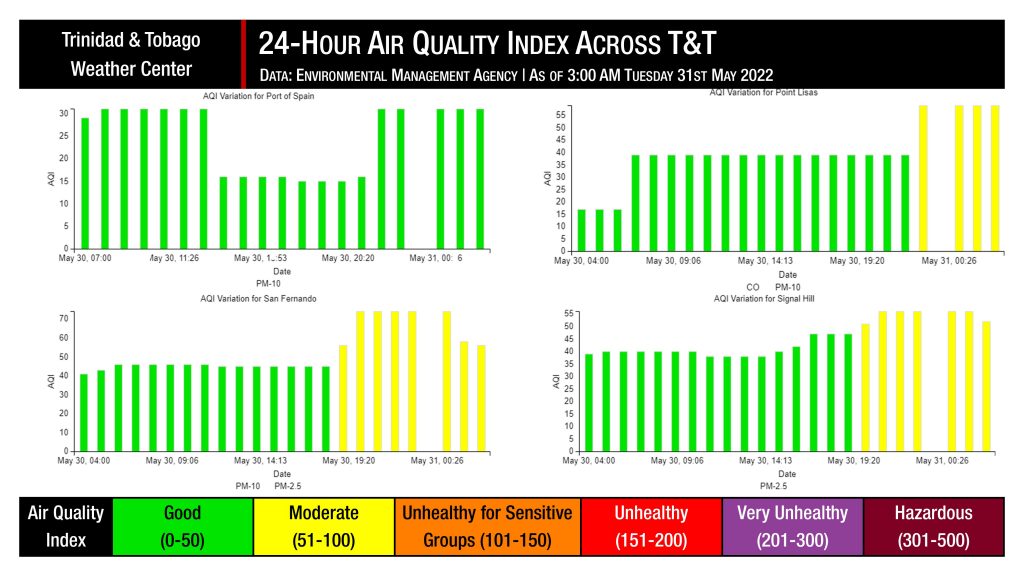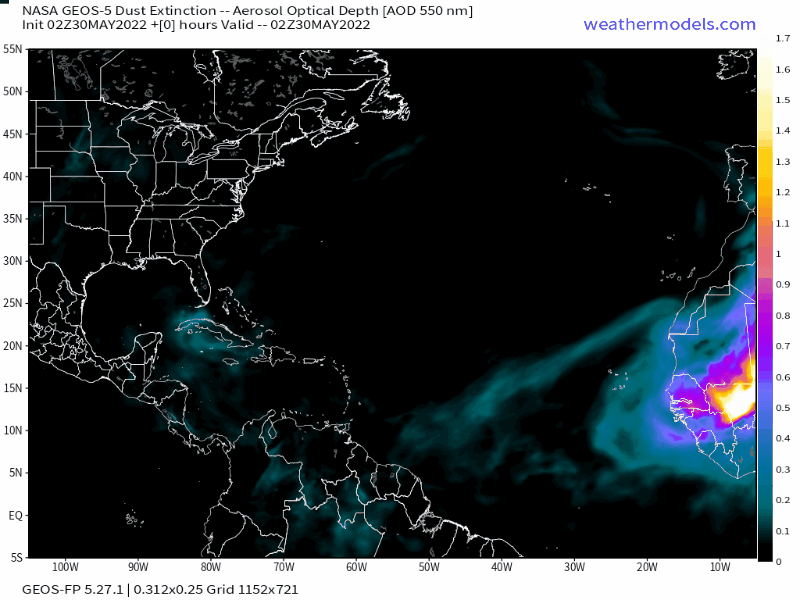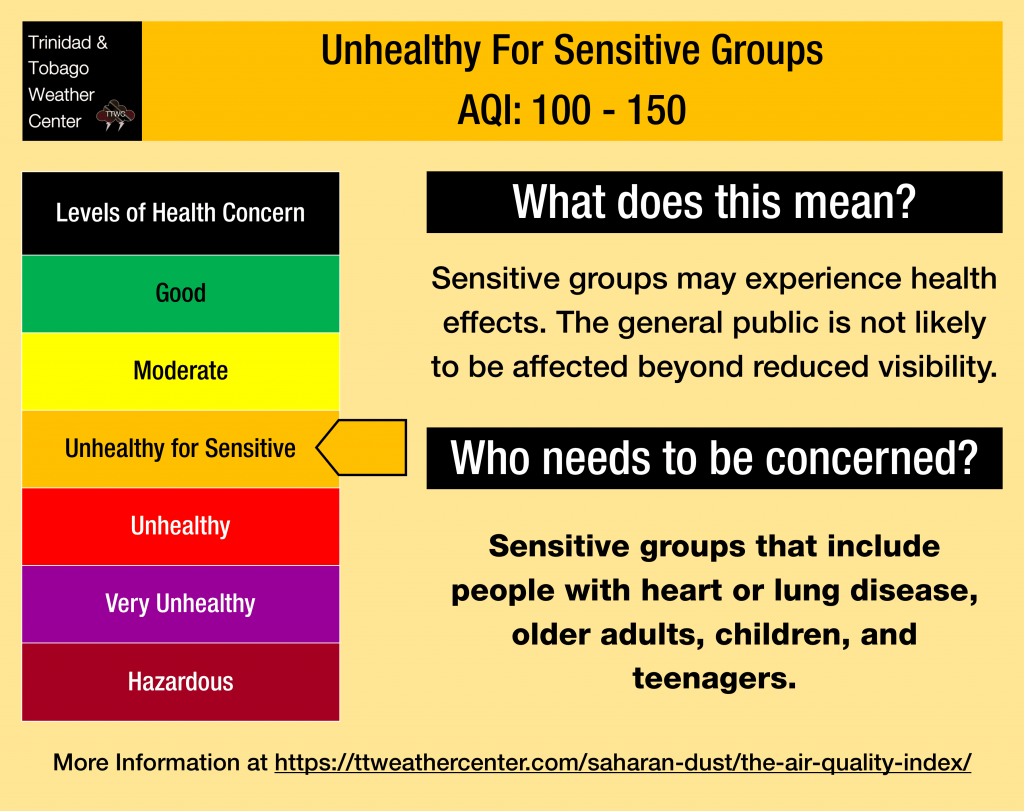Trinidad and Tobago is set to see a much welcome break from Saharan Dust this week, mainly due to the passage of a weak Tropical Wave on Monday, with a more robust and rainfall-producing wave on Thursday. However, the skies are set to become hazy once again by the weekend.
What you need to know
— Saharan Dust Surges: From Tuesday through early Thursday, mild Saharan Dust is forecast, improving again from late Thursday through mid-Friday. From late Friday, a prolonged moderate to high concentration dust surge is forecast to arrive across the region. Peak dust levels are forecast on Sunday, June 5th, 2022, and again on Tuesday, June 7th, 2022.
— Impacts: Air quality across Trinidad and Tobago will vary between good to moderate through Friday, at times dipping to levels that are unhealthy for sensitive groups, mainly from Saturday.
— What Should You Do: Through Friday, air quality will be mostly at good levels, as Saharan Dust mainly affects unusually sensitive groups. From late Friday, sensitive groups should take the necessary precautions, while the general population would be able to continue activities with minimal Saharan Dust safety measures.
Current AQI Levels Across T&T

The Environmental Management Agency (EMA) air quality monitoring stations at San Fernando, Point Lisas, and Signal Hill have all recorded good to moderate air quality levels over the last 24 hours while at Port of Spain, air quality levels have been good.
These measurements are based on PM2.5 (particulates the size of 2.5 micrometers and smaller, usually associated with increases in Saharan Dust, vehicle exhaust, and smoke) and PM10 particulates.
Over the last 24 hours, visibility remained above 10 kilometers at the Piarco International Airport and A.N.R. Robinson International Airport at Crown Point, Tobago.
Saharan Dust Forecast

Forecast models indicate that mild Saharan Dust levels will persist across T&T from Tuesday, May 31st through early Thursday, June 2nd, 2022. During this period across Trinidad and Tobago, air quality will vary between good to moderate levels with visibility mostly unaffected.
By Thursday through early Friday, due to the passage of a Tropical Wave and anticipated rainfall, air quality is forecast to be at good levels with minimal Saharan Dust.
From late Friday, June 3rd, 2022 through the second week of June, moderate to high concentrations of Saharan Dust is forecast to be present across the country and the Lesser Antilles. Air quality will vary between moderate and unhealthy for sensitive groups, with the visibility dropping as low as 7 kilometers outside of shower or thunderstorm activity.
What does this mean for you?


Mainly from Saturday, June 4th, 2022, air quality will be degraded. During high traffic periods, particularly between 6:00 AM and 9:00 AM, and again from 3:00 PM through 6:30 PM, air quality may be further reduced in localized areas.


Sensitive groups, such as children, the elderly, and persons who suffer from respiratory ailments and allergies, should avoid prolonged or heavy exertion and should keep medication nearby.
We’re in a period where the Intertropical Convergence Zone and Tropical Waves may shield Trinidad and Tobago from the Saharan Dust events. While tropical waves play a notable role in moving dust across the Atlantic and the Eastern Caribbean, these periodic tropical waves also improve air quality.
The concentration of the dust that follows the wave depends on the strength of the wave as it moves off the West African Coast. This is because of stronger thunderstorms across Central Africa. As strong winds move downward and outward from these thunderstorms, the wind kicks up dust as it moves across parts of the Saharan Desert and transports it into the upper atmosphere. This “plume” of dust follows the axis of the wave as it progresses westward into the Atlantic.
Dust that makes it into the upper levels of the atmosphere can then get transported across the Atlantic Ocean. The plumes of dust eventually affect the Eastern Caribbean.
Larger, more concentrated plumes of Saharan dust begin to occur in April and continue through November.











